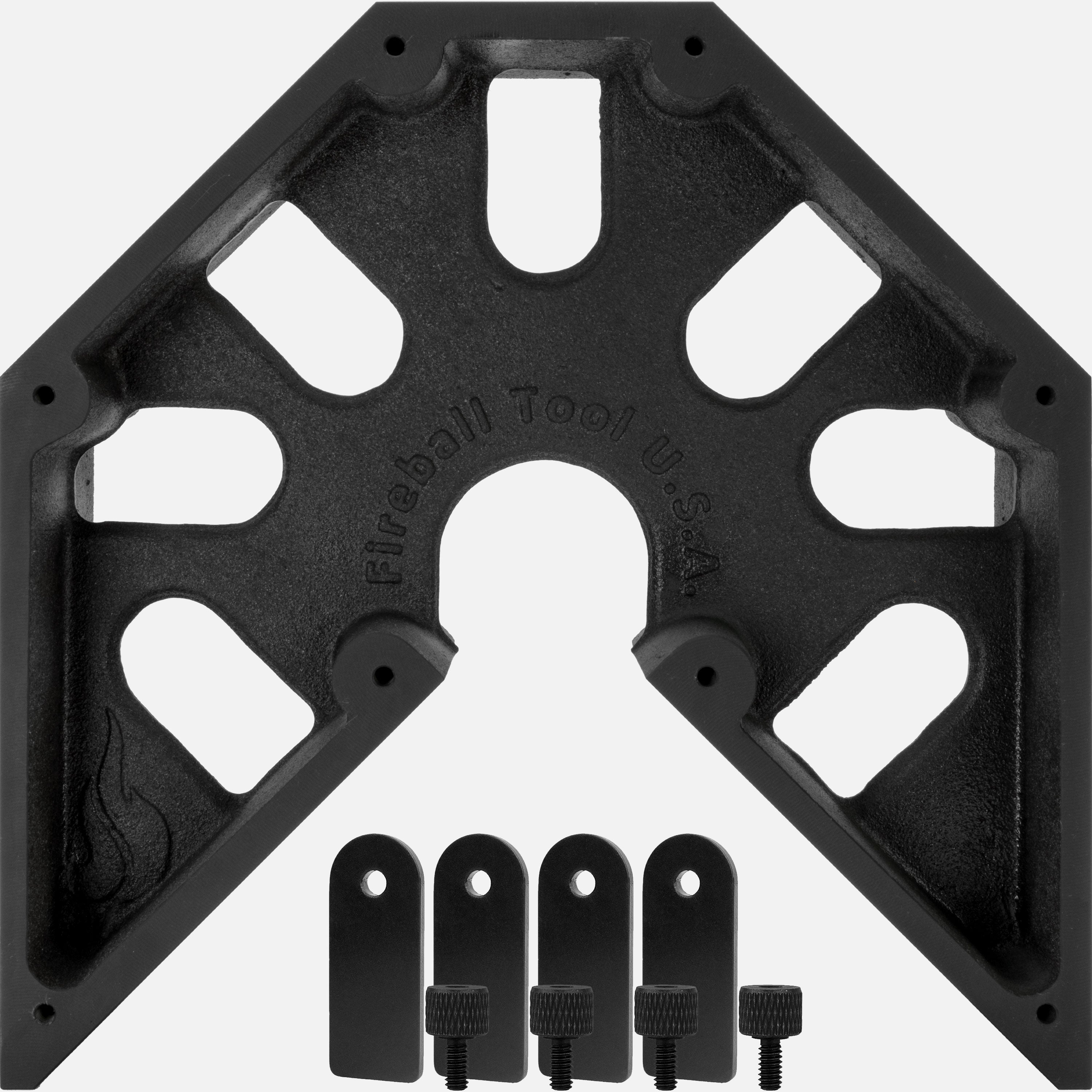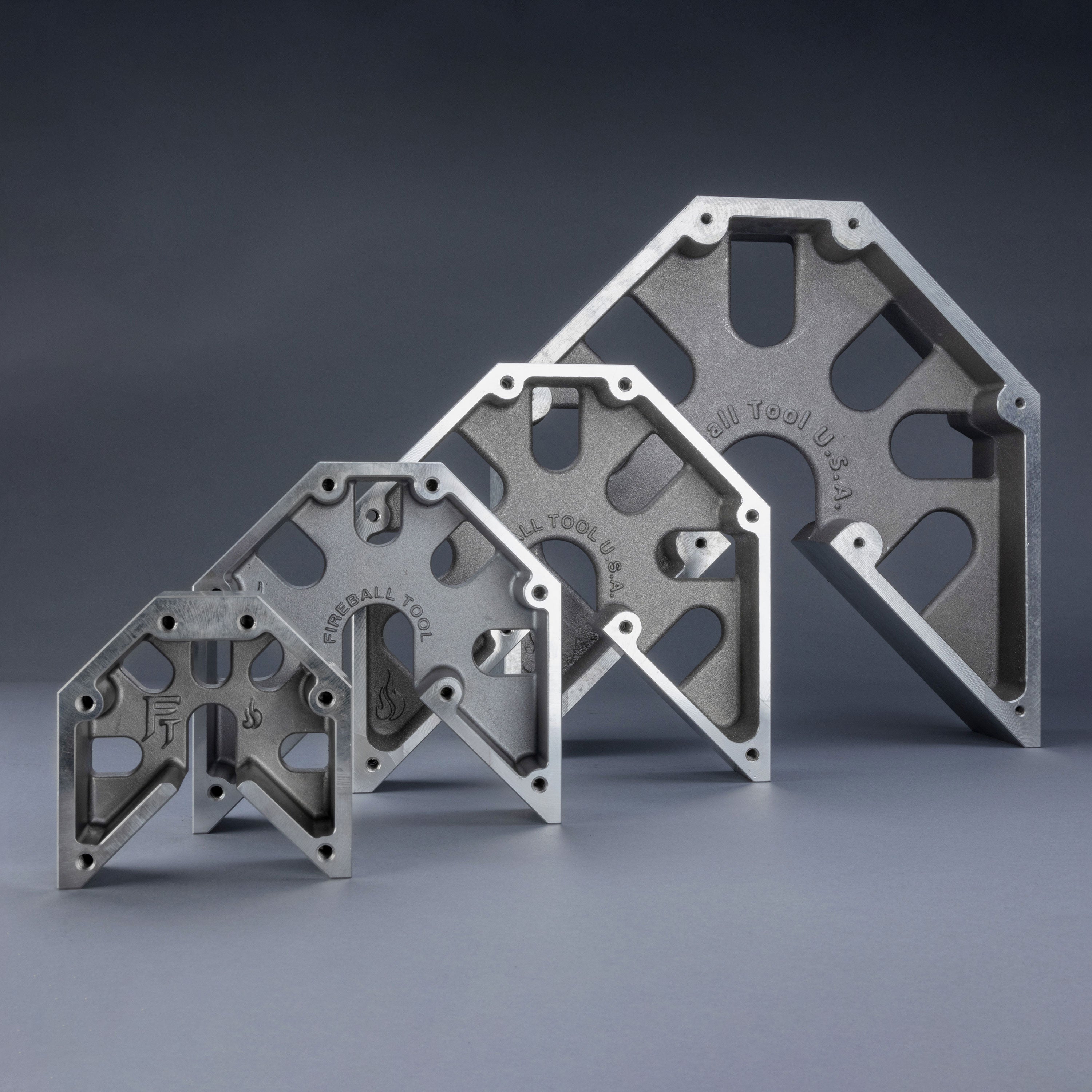Buyer’s Guide to Bench Vises
Choosing the Best Bench Vise for Your Work
Although a bench vise is not the largest tool in your arsenal, the most expensive, or the most high-tech, choosing the right bench vise for your work makes a big difference. With the right bench vise, you will be able to work more quickly and more precisely, with your materials held securely for you so they will not slip or vibrate. With a bench vise to hold your project securely in place, every stroke with the plane will be smooth and steady, each cut of your saw will be exact and effortless, and sanding will be quick and easy. However, to get these benefits from your bench vise, you need to be certain that you’ve chosen the most appropriate bench vise for the work you do before you make your purchase. That’s where we come in.
This guide to bench vises will describe the different types of bench vise on the market and when each type should be used—giving you the information you need to narrow the field and determine which bench vise will work best for you. Let’s dive in.
All types of bench vise have the same basic function, whether they’re used in woodworking, metalworking, working on cars, or in hobbyist shops. These devices bolt to your workbench, either to the top, the side, or the underside, and have jaws to hold your materials in place as you work. A screwing mechanism operates the vise’s jaws, which stand parallel from one another so they can be opened to accommodate the object and closed to clamp down tightly on it.
In addition to holding your project securely, the bench vise can be used to give you something solid to hammer objects on. Bench vises are so handy because they free up both your hands to work and also help you maintain a safe distance when doing tricky work. Although all bench vises have the same basic function, there are many different types of bench vise that are made to be used in specific situations. Here’s what you need to know to figure out which type of bench vise will best suit your workshop.
How to Choose the Best Bench Vise for You
Now that you know the different types of bench vise that are available to choose from, you probably have a good idea of which style will be best for your projects. Now you need to start the process of choosing from all the different models of vise that come in that style. There are several things to consider that will help guide you toward the best bench vise for your work.
Anvil
If you know that you’ll be using your vise for lots of hammering and shaping projects, it will be worth your while to choose a vise that comes with a large rear anvil. Lots of benchtop vise models have a flat surface on the top in the center of the vise that can be used as an anvil to hammer in pins or rivets or to use in flattening and shaping metal. The anvil is set over the base of the vise to make it sturdy, as the surface won’t absorb the force of your hammering and it will be sent into the workpiece.
Cast Vises Versus Forged Vises
Cast vises are the most common models you’ll find, made when hot liquid metal is poured into a mold. Cast vises tend to be the most economical choice, but they do have their downsides. The surface finish of cast vises can be rough, and there is always the possibility of impure casting, which will leave you with a weaker vise. Although forged models will be more costly than other options, they are a wise investment if you will be doing plenty of hammering, shaping, or other heavy duty work. Forged vises are made of solid steel, which is heated before being pounded into its finished form. A forged vise comes along with more tensile strength than a cast vise. While a cast vise will have tensile strength ranging from 19,000 to 60,000 Psi (pounds per square inch), the tensile strength of a forged vise can be as high as 90,000 Psi or more.
Durability
The main body of your vise will be strong and solid enough to help you with your work for years, but the jaws may become worn with heavy use. If you plan to use your vise regularly, keep the possibility of wear in mind and look for a model that has serrated jaws you can replace. Some models will come with a support program for spare parts, which will be valuable for those who need it.
Jaw Opening/Jaw Width
The jaw opening is measured as the length of the vise’s jaws from one end to another. Most common DIY projects and household tasks don’t need a vise with a jaw width wider than four or five inches. But if you will be doing specialized work with larger materials, be sure to select a vise with a jaw opening wide enough to accommodate your projects. Unwind the vise you are considering completely before you purchase it to make sure it will hold the largest materials you will use it for.
Material
Whether a vise is made to hold wood or metal, the vise itself is normally made out of iron or steel. A high quality alloy makes up the jaws, slide, and mainframe, while the vise’s handle, screw, and jaw surfaces are cast from steel. Iron vises may be made from either grey iron (also called cast iron) or ductile iron. Grey iron consists of 95 percent iron, with three percent silicon and two percent carbon. Ductile iron is a different type of cast iron, and it may be mixed with carbon, silicon, and magnesium. Grey iron is a superior shock absorber and will keep your materials from vibrating when they are clamped. Ductile iron is less brittle, with less of a chance for cracking, and gives the vise greater flexibility. Some woodworking vises are made from steel, which is an iron and carbon alloy, and some are made of a combination of steel and iron. Hardened steel is the most durable, strongest material, but it may allow your materials to vibrate a bit as you work.
Mount Type
While most vises use three or four bolts to affix them to the workbench, models that are intended for lighter duty can be mounted with a clamp or suction cup instead. If you foresee needing to alter the position of your vise on the bench, or if your vise will be used to hold materials of odd shapes and sizes, look for a 360-degree swivel base. When you are bending a material to shape, it will be helpful to be able to swivel the vise’s jaws so you have a better angle for working on your project. The ability to swivel your vise can also save you the pain of bending or hunching over your work, since you’ll be able to clamp your work in place and adjust the angle of the vise using the swivel.
Jaw Type: Serrated, Pipe, or Combination
Will you be using your vise to hold flat objects or round pieces, such as pipes? Pipes are best held with pipe jaws, but pipe jaws aren’t very useful in holding other objects. Serrated jaws can hold either flat pieces or pipes, while combination jaws offer the choice between pipe and serrated jaws.
Opening Mechanism: Quick Release Versus Manual
If you’ll be using your vise to hold the same type of materials, or materials of the same size, most of the time, a manual opening mechanism will work well for you. But if you’ll be switching between work pieces of different sizes and shapes, a quick release opening mechanism will save you lots of time in adjustment, since you won’t need to unwind the lead screw manually. It sounds like a small consideration, but if you have use for a quick release opening mechanism, choosing a vise that has one will save you lots of time—not to mention annoyance.
Weight and Heft
You’ll only really be able to compare the weight and heft of different vises in person, so even if you find the best deal online, it’s worth a trip to the hardware store so you can pick up the vises you’re considering and see how solid and sturdy they are. Two vises with exactly the same features and jaw width may differ in how heavy they are. Especially if you know you will be using the vise as an anvil, you should choose a heavy, solid vise that can take the impact of all that hammering. Your workbench must be strong enough to support the weight of the vise you choose, however.







